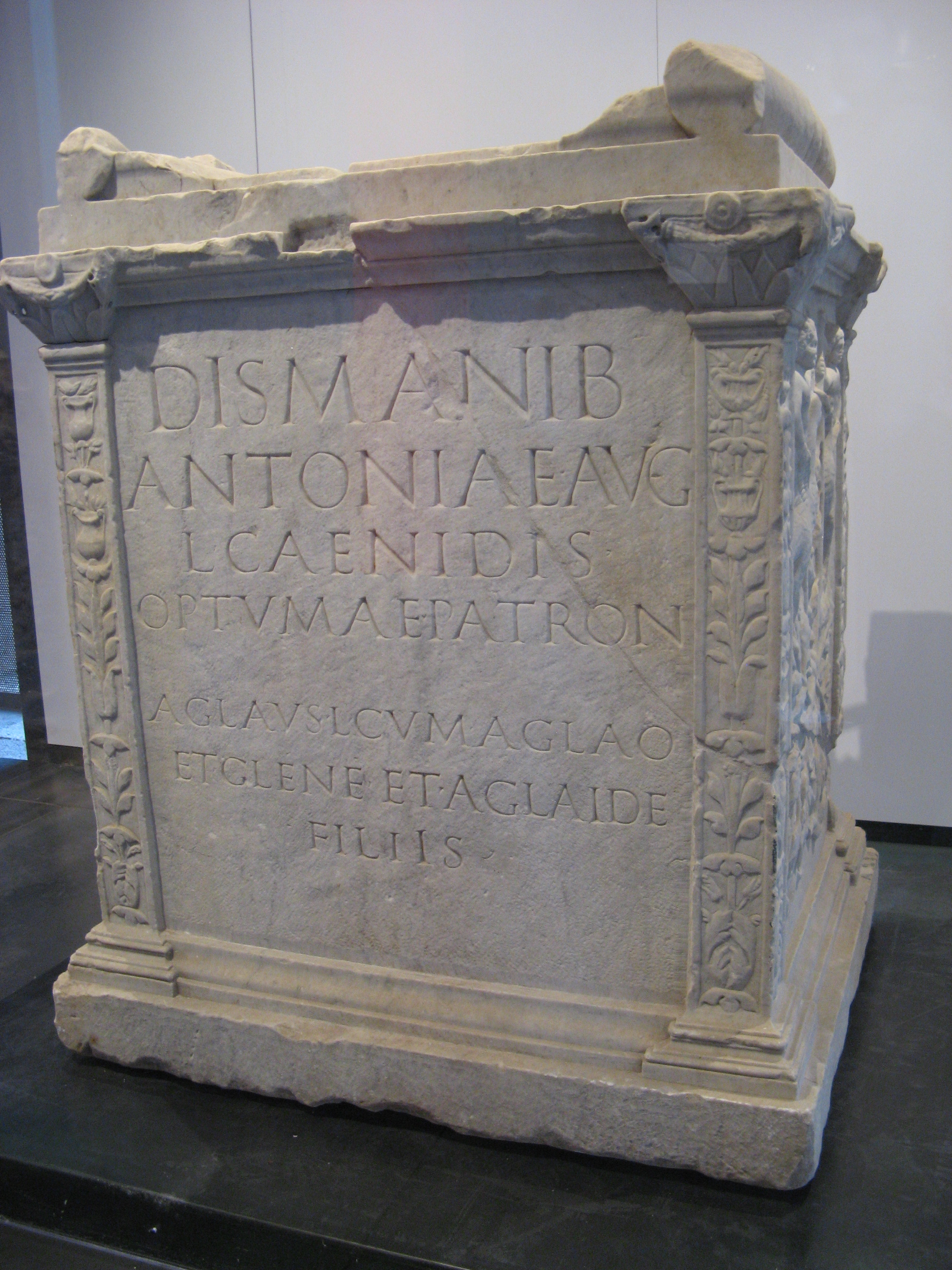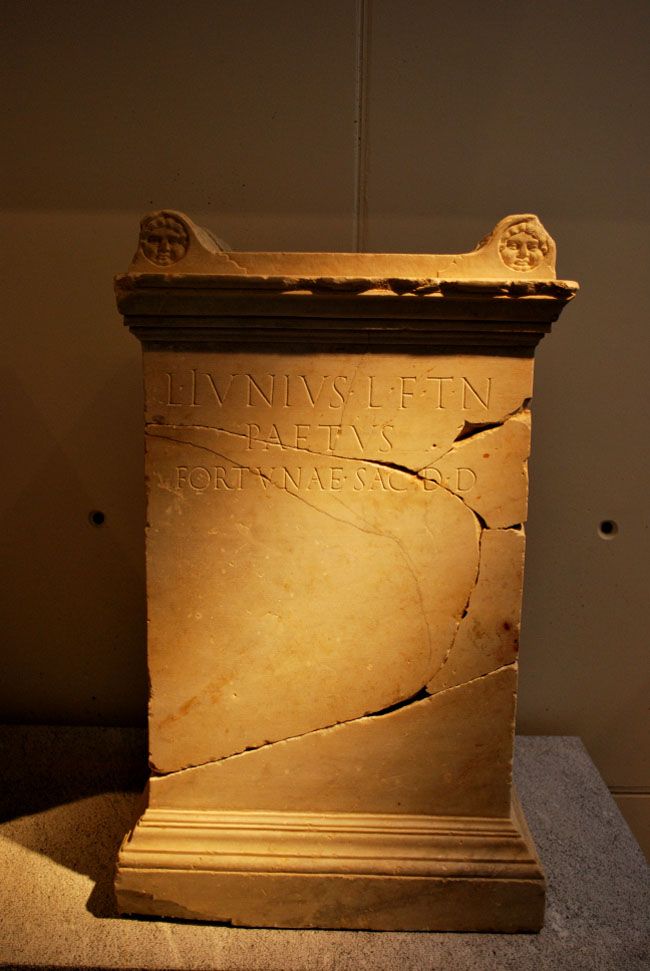|
Concubinatus
''Concubinatus'' (Latin, "concubinage") was a monogamous union, intended to be of some duration but not necessarily permanent, that was socially and to some extent legally recognized as an alternative to marriage in the Roman Empire. Concubinage became a legal concern in response to Augustan moral legislation that criminalized adultery and imposed penalties on some consensual sexual behaviors outside marriage. Reasons for choosing ''concubinatus'' over marriage varied. If one partner was freeborn and belonged to the senatorial order, and the other was a former slave, there were legal penalties for marrying. More generally, wealthy widowers or divorced men might avoid the legal complexities of a second marriage in preserving their estates for heirs while still acknowledging a commitment to their partner. However, both partners might be freedpersons, with the benefits of ''concubinatus'' over marriage for people of this status not entirely clear in the historical record. ''Concu ... [...More Info...] [...Related Items...] OR: [Wikipedia] [Google] [Baidu] |
Concubinage
Concubinage is an interpersonal relationship, interpersonal and Intimate relationship, sexual relationship between two people in which the couple does not want to, or cannot, enter into a full marriage. Concubinage and marriage are often regarded as similar, but mutually exclusive. During the early stages of European colonialism, administrators often encouraged European men to practice concubinage to discourage them from paying prostitutes for sex (which could spread venereal disease) and from homosexuality. Colonial administrators also believed that having an intimate relationship with a native woman would enhance white men's understanding of native culture and would provide them with essential domestic labor. The latter was critical, as it meant white men did not require wives from the metropole, hence did not require a family wage. Colonial administrators eventually discouraged the practice when these liaisons resulted in offspring who threatened colonial rule by producing a m ... [...More Info...] [...Related Items...] OR: [Wikipedia] [Google] [Baidu] |
Slavery In Ancient Rome
Slavery in ancient Rome played an important role in society and the economy. Unskilled or low-skill slaves labored in the fields, mines, and mills with few opportunities for advancement and little chance of freedom. Skilled and educated slaves—including artisans, chefs, domestic staff and personal attendants, #Gladiators, entertainers, and prostitutes, entertainers, business managers, accountants and bankers, educators at all levels, secretaries and librarians, civil servants, and physicians—occupied a more privileged tier of servitude and could hope to obtain freedom through one of several well-defined paths with protections under the law. The possibility of #Manumission, manumission and subsequent citizenship was a distinguishing feature of Rome's system of slavery, resulting in a significant and influential number of freedpersons in Roman society. At all levels of employment, free working people, former slaves, and the enslaved mostly did the same kinds of jobs. Elite Ro ... [...More Info...] [...Related Items...] OR: [Wikipedia] [Google] [Baidu] |
Contubernium
In ancient Rome, ''contubernium'' was a quasi-marital relationship between two Slavery in ancient Rome, slaves or between a slave (''Slavery in ancient Rome#The slave in Roman law and society, servus'') and a free person who was usually a former slave or the child of a former slave. A slave involved in such a relationship was called ''contubernalis'', the basic and general meaning of which was "companion". Under Roman law, the slave was treated as property (''res'') and lacked the legal personhood to enter into legitimate forms of marriage. Although not codified as marriage (''conubium'') in Roman law, ''contubernium'' had legal implications that were addressed by Roman jurists in case law and was intended to be a lasting, ideally permanent union modelled on marital affection (''affectio maritalis'') that was approved and recognized by the slave's owner. Inscriptions indicate that ''contubernium'' with the intentions it expressed was primarily a concern for "upwardly mobile" sl ... [...More Info...] [...Related Items...] OR: [Wikipedia] [Google] [Baidu] |
Lex Julia
A ''lex Julia'' (plural: ''leges Juliae'') was an ancient Roman law that was introduced by any member of the gens Julia. Most often, "Julian laws", ''lex Julia'' or ''leges Juliae'' refer to moral legislation introduced by Augustus in 23 BC, or to a law related to Julius Caesar. ''Lex Julia de civitate'' (90 BC) During the Social War, a conflict between the Italians and the Romans over the withholding of Italian citizenship, the consul Lucius Julius Caesar passed a law to grant all Italians not under arms citizenship. At the instruction of the Senate, Lucius Caesar proposed a law providing that each Italian community would decide as to whether they would take Roman citizenship and establish new tribes – possibly eight – in the Tribal Assembly for the new citizens. This grant to citizenship had the effect of almost tripling the number of Roman citizens and annexing large swathes of Italy into the republic proper. The offer would be open to all Italian towns which w ... [...More Info...] [...Related Items...] OR: [Wikipedia] [Google] [Baidu] |
Ancillae
''Ancillae'' (plural) (singular, ''ancilla'') were female house slaves in ancient Rome, as well as in Europe during the Middle Ages.Judith M. Bennett & Amy M. Froide, Singlewomen in the European Past, 1250-1800' In medieval Europe, slavery was gradually replaced by serfdom, but a small number of female slaves were imported as household servants for the wealthy, most commonly in Italy, Spain and France. Ancient Rome ''Ancilla'' was the common word for a female house slave in ancient Rome. The more general word for a female slave was ''serva''. An ''ancilla'' in an upper class household might serve like a lady's maid. ''Ancillae'' in this setting might be specialized in attending to the upkeep, storage, and readiness of the mistress's wardrobe or jewelry. For example, one inscription records an ''ancilla'' named Phoebe assigned ''ad speculum'', "to the mirror". The Roman law of slavery pertained to both male and female slaves, and was specific to ''ancillae'' primarily in rega ... [...More Info...] [...Related Items...] OR: [Wikipedia] [Google] [Baidu] |
Kings Of Rome
The king of Rome () was the ruler of the Roman Kingdom, a legendary period of Roman history that functioned as an elective monarchy. According to legend, the first king of Rome was Romulus, who founded the city in 753 BC upon the Palatine Hill. Seven legendary kings are said to have ruled Rome until 509 BC, when the last king was overthrown. These kings ruled for an average of 35 years. The kings after Romulus were not known to be dynasts and no reference is made to the hereditary principle until after the fifth king Tarquinius Priscus. Consequently, some have assumed that the Tarquins' attempt to institute a hereditary monarchy over this conjectured earlier elective monarchy resulted in the formation of the Republic. Overview Early Rome was ruled by the king (''rex''). The king possessed absolute power over the people; no one could rule over him. The Senate was a weak oligarchy, capable of exercising only minor administrative powers, so that Rome was ruled by its king who ... [...More Info...] [...Related Items...] OR: [Wikipedia] [Google] [Baidu] |
Glossary Of Ancient Roman Religion
The vocabulary of ancient Roman religion was highly specialized. Its study affords important information about the religion, traditions and beliefs of the ancient Romans. This legacy is conspicuous in European cultural history in its influence on later juridical and religious vocabulary in Europe, particularly of the Christian Church. This glossary provides explanations of concepts as they were expressed in Latin pertaining to Religion in ancient Rome, religious practices and beliefs, with links to articles on major topics such as priesthoods, forms of divination, and rituals. For theonyms, or the names and epithets of gods, see List of Roman deities. For public religious holidays, see Roman festivals. For temples see the List of Ancient Roman temples. Individual landmarks of religious Topography of ancient Rome, topography in ancient Rome are not included in this list; see Roman temple. __NOTOC__ Glossary A abominari The verb ''abominari'' ("to avert an omen", from ''ab-'', ... [...More Info...] [...Related Items...] OR: [Wikipedia] [Google] [Baidu] |
Jupiter (mythology)
Jupiter ( or , from Proto-Italic language, Proto-Italic "day, sky" + "father", thus "sky father" Greek: Zeus, Δίας or Zeus, Ζεύς), also known as Jove (nominative case, nom. and genitive case, gen. ), is the sky god, god of the sky and god of thunder, thunder, and king of the gods in ancient Roman religion and Roman mythology, mythology. Jupiter was the chief deity of Roman state religion throughout the Roman Republic, Republican and Roman Empire, Imperial eras, until Constantine the Great and Christianity, Christianity became the dominant religion of the Empire. In Roman mythology, he negotiates with Numa Pompilius, the second king of Rome, to establish principles of Roman religion such as offering, or sacrifice. Jupiter is thought to have originated as a sky god. His identifying implement is the thunderbolt and his primary sacred animal is the eagle, which held precedence over other birds in the taking of auspices and became one of the most common symbols of the Roma ... [...More Info...] [...Related Items...] OR: [Wikipedia] [Google] [Baidu] |
Juno (mythology)
Juno ( ; Latin ) was an Religion in ancient Rome, ancient Roman goddess, the protector and special counsellor of the state. She was syncretism, equated to Hera, queen of the gods in Greek mythology and a goddess of love and marriage. A daughter of Saturn (mythology), Saturn and Ops, she was the sister and wife of Jupiter (mythology), Jupiter and the mother of Mars (mythology), Mars, Vulcan (mythology), Vulcan, Bellona (goddess), Bellona, Lucina (mythology), Lucina and Juventas. Like Hera, her sacred animal was the peacock.''Larousse Desk Reference Encyclopedia'', The Book People, Haydock, 1995, p. 215. Her Etruscan Civilization, Etruscan counterpart was Uni (mythology), Uni, and she was said to also watch over the women of Rome. As the patron goddess of Rome and the Roman Empire, Juno was called ("Queen") and was a member of the Capitoline Triad (''Juno Capitolina''), centered on the Capitoline Hill in Rome, and also including Jupiter, and Minerva, goddess of wisdom. Juno's ow ... [...More Info...] [...Related Items...] OR: [Wikipedia] [Google] [Baidu] |





